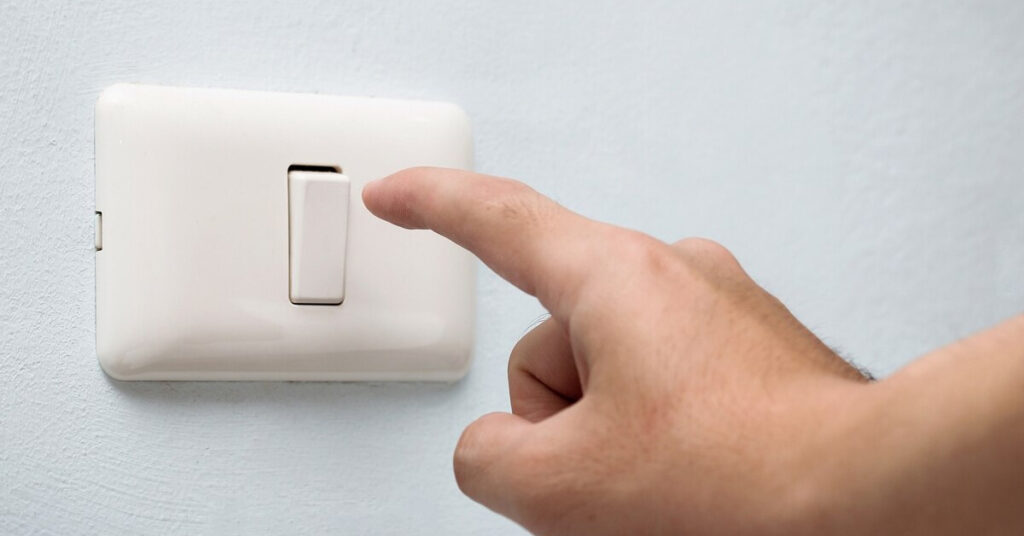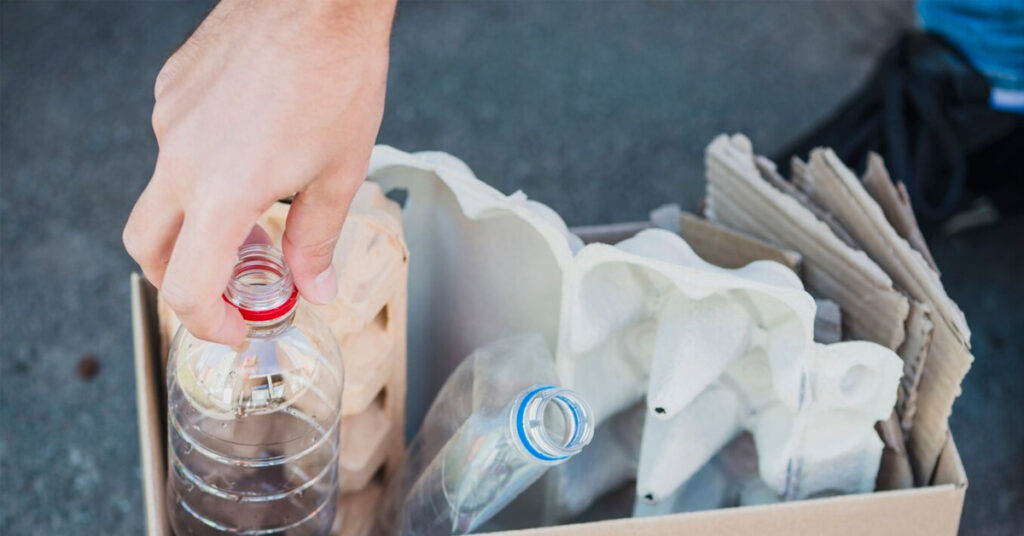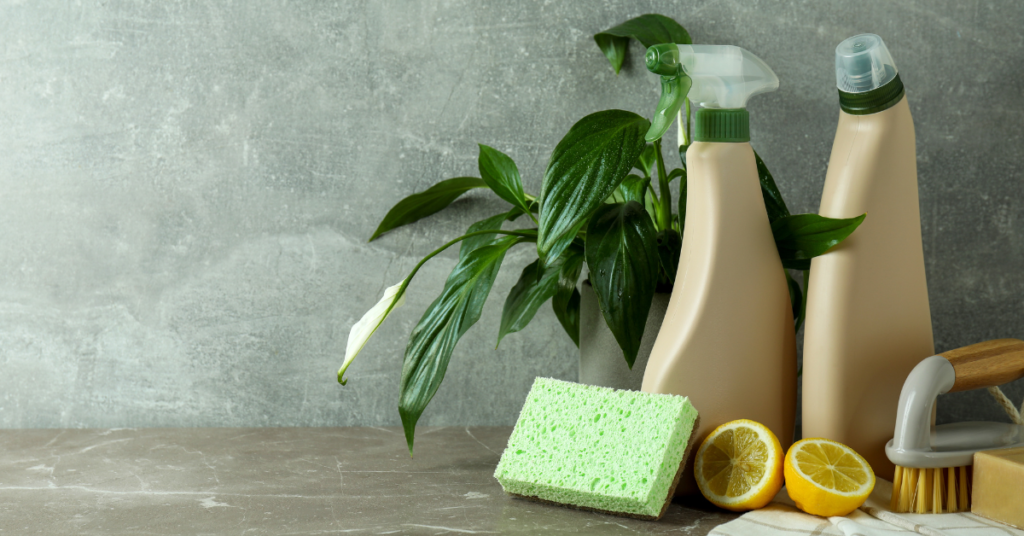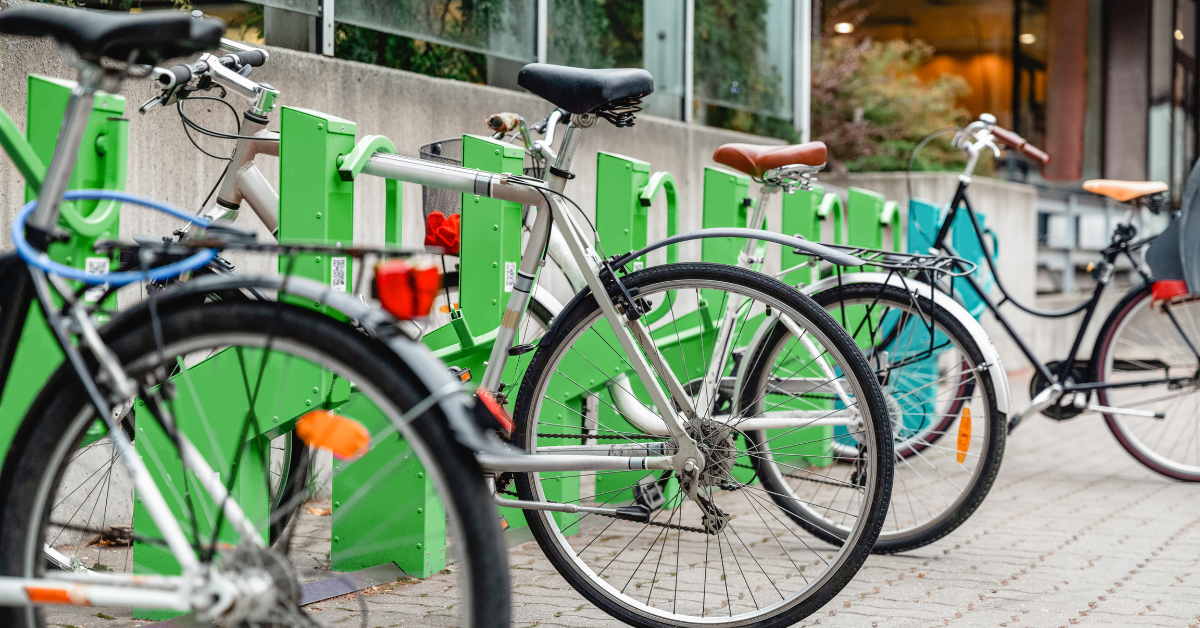10 Practical Tips for Eco-Conscious Renters
As renters, we often think of our homes as temporary spaces where our actions have limited impact. However, the truth is that even as tenants, we can make a significant difference in our environmental footprint and our wallets. In this guide, we’ll explore 10 practical and empowering tips for eco-conscious renters to save money while…

As renters, we often think of our homes as temporary spaces where our actions have limited impact. However, the truth is that even as tenants, we can make a significant difference in our environmental footprint and our wallets.
In this guide, we’ll explore 10 practical and empowering tips for eco-conscious renters to save money while living sustainably. From energy-efficient lighting to community engagement, these tips will not only help you reduce your environmental impact but also contribute to a healthier and more sustainable world.
1. Switch to Energy-Efficient Lighting
Let’s kick things off with a bright idea: energy-efficient lighting! By swapping out traditional bulbs for LED alternatives, you can significantly reduce your energy consumption and lower your electricity bills. Energy-efficient lighting, particularly LED (Light Emitting Diode) bulbs, offers numerous benefits compared to traditional incandescent and even compact fluorescent (CFL) bulbs.
Here are some of the key advantages of energy-efficient lighting for eco-conscious renters:
- Energy Savings: LED bulbs use significantly less energy than incandescent and CFL bulbs, resulting in lower electricity bills.
- Longevity: LED bulbs have a much longer lifespan compared to traditional bulbs, reducing the frequency of replacements and associated maintenance costs.
- Durability: LED bulbs are more robust and resistant to shock, vibration, and external impacts, making them ideal for various environments, including outdoor and industrial settings.
- Instantaneous Lighting: Unlike CFLs, LED bulbs provide full brightness immediately upon switching on, without any warm-up time.
- Low Heat Emission: LED bulbs emit very little heat, making them safer to handle and reducing the load on air conditioning systems, especially in confined spaces.
- Customizable Lighting: LED technology allows for customizable lighting solutions, including dimmable options and a wide range of color temperatures to suit different preferences and applications.
- Environmental Benefits: LED bulbs consume less energy and contain no toxic materials like mercury (found in CFLs), making them environmentally friendly and reducing carbon emissions.

When choosing the right LED bulbs for different areas of your home, consider the following tips:
- Brightness (Lumens): Determine the appropriate brightness level based on the room’s size and purpose. For example, higher lumens are suitable for task lighting in kitchens and workspaces, while softer lighting may be preferred in living rooms and bedrooms.
- Color Temperature (Kelvin): Select the desired color temperature to create the desired ambiance. Warmer temperatures (2700-3000K) are cozy and inviting, while cooler temperatures (4000-5000K) are more energizing and suitable for task-oriented areas.
- Fixture Compatibility: Ensure that the LED bulbs you choose are compatible with the fixtures in your home. Some LED bulbs may not be suitable for enclosed fixtures or dimming systems, so check the packaging or manufacturer’s specifications.
- Dimmability: If you require dimmable lighting, make sure to choose LED bulbs labeled as dimmable and compatible with your existing dimmer switches.
- Quality and Brand: Invest in high-quality LED bulbs from reputable brands to ensure reliability, longevity, and performance consistency. While they may be slightly more expensive upfront, they often provide better value in the long run.
- Energy Efficiency: Look for ENERGY STAR-certified LED bulbs, which meet strict energy efficiency and performance criteria set by the U.S. Environmental Protection Agency (EPA).
- Aesthetics: Consider the physical design and appearance of the LED bulbs, especially if they will be visible in exposed fixtures or decorative lighting installations.
By considering these factors and selecting the right LED bulbs for each area of your home, you can enjoy improved lighting quality, energy savings, and long-term benefits.
2. Implement Water-Saving Techniques
Now, let’s turn our attention to the liquid gold – water. In this section, we’ll explore the importance of water conservation in rental properties and offer practical tips for reducing water usage in your kitchen, bathroom, and laundry room.
Here are practical tips for reducing water usage in various areas of a rental property:
Kitchen
- Use Efficient Appliances: Choose energy-efficient dishwashers and washing machines with high water-saving ratings.
- Fix Leaks: Regularly check for and promptly repair any leaks in faucets, pipes, or appliances to prevent water wastage.
- Scrape Instead of Rinse: Scrape food scraps off dishes instead of rinsing them before loading them into the dishwasher. This saves both water and energy.
- Full Loads Only: Wait until you have a full load before running the dishwasher or washing machine to maximize water efficiency.
- Install Low-Flow Faucets: Replace old faucets with low-flow aerators to reduce water flow without compromising functionality.
Bathroom
- Install Low-Flow Fixtures: Replace old showerheads and faucets with low-flow versions to reduce water usage while maintaining water pressure.
- Take Shorter Showers: Take shorter showers to minimize water usage. Consider installing a timer or water-saving showerhead to help regulate shower length.
- Fix Leaks: Regularly inspect and repair leaks in toilets, faucets, and showerheads to prevent water wastage.
- Turn Off the Tap: Turn off the tap while brushing their teeth or shaving to conserve water.
- Install Dual-Flush Toilets: Consider installing dual-flush toilets, which allow users to choose between a full flush and a partial flush based on need.
Laundry Room
- Use High-Efficiency Appliances: Invest in energy-efficient washing machines that use less water per cycle.
- Adjust Water Levels: Ensure that washing machines are set to the appropriate water level for each load size to avoid unnecessary water usage.
- Full Loads Only: Encourage tenants to wait until they have a full load of laundry before using the washing machine to maximize water efficiency.
- Reuse Greywater: Consider installing a greywater recycling system to reuse water from the laundry for purposes such as irrigation.
- Fix Leaks: Regularly inspect and repair leaks in washing machine hoses and connections to prevent water wastage.
3. Minimize Waste

Minimizing waste is a win-win solution for both the environment and your finances. By reducing waste, you not only lessen your ecological footprint but also save money in the process. In this section, we’ll explore the environmental and financial benefits of waste reduction and offer practical tips for implementing waste minimization practices in your rental home.
Firstly, reducing waste helps to conserve natural resources and reduce pollution, leading to a healthier planet for future generations. Additionally, by minimizing the amount of waste you produce, you can lower your spending on disposable items and waste disposal services. From composting organic waste to setting up a recycling system, there are various strategies you can adopt to cut down on waste and maximize savings.
Start by conducting a waste audit to identify areas where you can reduce waste in your household. Look for opportunities to avoid single-use items and opt for reusable alternatives instead. Implement a composting system for organic waste, which not only reduces landfill waste but also produces nutrient-rich soil for gardening. Set up a convenient recycling station in your home to ensure that recyclable materials are properly sorted and disposed of.
Consider buying products with minimal packaging or opting for bulk purchases to reduce waste from packaging materials. Repair and repurpose items whenever possible instead of throwing them away, and donate or sell items that are no longer needed to give them a new lease on life.
4. Conserve Energy
Lights off, energy on! Energy conservation is key to reducing your utility bills and your carbon footprint. Begin by encouraging simple habits such as switching to LED bulbs, turning off lights when not in use, and unplugging electronics to avoid standby power consumption. Additionally, advise tenants to adjust thermostat settings for optimal energy use, seal air leaks, and utilize natural light whenever possible. Regular HVAC maintenance, appliance upgrades to Energy Star-rated models, and educating tenants on energy-saving practices are also crucial steps.
Introducing smart home devices like programmable thermostats, smart power strips, and energy monitoring systems can further streamline energy management. These technologies enable remote control of temperature settings, automatic shutdown of idle devices, and real-time monitoring of electricity usage, empowering tenants to make informed decisions about their energy consumption.
5. Opt for Eco-Friendly Cleaning Products

Clean up your act with eco-friendly cleaning products! Switching to eco-friendly cleaning products offers numerous benefits for both your health and the environment. Conventional cleaning products often contain harsh chemicals and toxins that can be harmful when inhaled or come into contact with the skin, leading to respiratory issues, skin irritation, and other health concerns. By opting for natural and non-toxic cleaning alternatives, you can reduce your exposure to these harmful substances and create a safer living environment for yourself and your family.
Eco-friendly cleaning products are typically made from renewable and biodegradable ingredients, minimizing their impact on the environment. Unlike conventional cleaners that contain chemicals that can linger in the air and waterways, natural cleaning solutions break down more easily, reducing pollution and potential harm to aquatic life. Additionally, many eco-friendly products come in recyclable or biodegradable packaging, further reducing waste and environmental footprint.
When choosing eco-friendly cleaning products, look for labels indicating that they are free from harmful chemicals such as chlorine, ammonia, phosphates, and synthetic fragrances. Instead, opt for products made from plant-based ingredients, such as citrus oils, vinegar, baking soda, and essential oils, which are effective at cleaning without posing health risks or harming the environment.
Alternatively, you can create your own DIY cleaning solutions using simple household ingredients. For example, vinegar diluted with water can be used as a multipurpose cleaner, while baking soda can effectively scrub away stains and odors. Lemon juice and hydrogen peroxide are also excellent natural disinfectants, and essential oils like tea tree oil and lavender can add a pleasant scent while providing antibacterial properties.
Making the switch to natural and non-toxic cleaners is a simple yet impactful way to promote a healthier lifestyle and reduce your ecological footprint.
6. Reduce Heating and Cooling Costs
Stay cool (or warm) without breaking the bank! Heating and cooling efficiency is essential for reducing your energy bills and your environmental impact. Optimizing your heating and cooling systems is essential for maintaining comfort and reducing energy costs. Here are some tips to help you achieve this:
Install a Programmable Thermostat
Programmable thermostats allow you to set different temperatures for various times of the day, automatically adjusting the temperature when you’re away or asleep. This can lead to significant energy savings without sacrificing comfort.
Regular Maintenance
Schedule regular maintenance for your heating and cooling systems, including cleaning or replacing filters, inspecting ductwork for leaks, and ensuring all components are functioning correctly. Well-maintained systems operate more efficiently and last longer.
Seal Air Leaks
Seal any gaps or cracks around doors, windows, and vents to prevent warm or cool air from escaping and outside air from entering. Use weatherstripping, caulking, or foam sealant to seal these drafts effectively.
Improve Insulation
Proper insulation helps maintain a consistent temperature inside your home by preventing heat transfer through walls, floors, and ceilings. Insulate attics, crawl spaces, and walls as needed to improve energy efficiency.
Use Ceiling Fans
In both summer and winter, ceiling fans can help distribute air more efficiently. This reduces the workload on your heating and cooling systems. Use fans in conjunction with your HVAC system to maintain comfort while using less energy.
Optimize Ventilation
Ensure that vents are not obstructed by furniture or other objects and keep them clean to allow for proper airflow. Consider using exhaust fans in kitchens and bathrooms to remove excess heat and humidity.
Set Temperature Wisely
Adjust your thermostat to a comfortable but energy-efficient temperature. In winter, set the thermostat to a lower temperature when you’re away or sleeping, and in summer, set it higher. Even small adjustments can lead to significant energy savings.
Utilize Natural Heating and Cooling
Take advantage of natural heating from the sun during the day by opening curtains or blinds on south-facing windows in winter. In summer, close curtains or blinds during the hottest parts of the day to block out excess heat.
Schedule Regular HVAC Inspections
Have a professional HVAC technician inspect your system annually to identify and address any issues promptly. This can help prevent costly repairs and ensure optimal performance throughout the year.
7. Embrace Sustainable Transportation

Embracing sustainable transportation options not only benefits the environment but also your finances. By reducing reliance on cars, you can decrease carbon emissions and save money on fuel and maintenance costs. Consider walking, biking, carpooling, or using public transportation whenever possible.
These alternatives not only reduce your carbon footprint but also promote physical activity and reduce traffic congestion. Additionally, explore electric vehicles (EVs) as a cleaner transportation option. Many regions offer incentives such as tax credits, rebates, and access to carpool lanes for eco-friendly commuting.
8. Engage with the Community
Community involvement is key to promoting sustainable living. Joining forces with fellow renters allows for collective action towards a greener future. Participate in local sustainability initiatives, community gardens, and resource-sharing programs with neighbors. Forming or joining eco-conscious tenant groups can amplify your impact by advocating for green policies and practices in rental properties. By engaging with the community, you can foster a sense of shared responsibility for the environment and inspire positive change on a larger scale.
Conclusion: Tips for Eco-Conscious Renters
Congratulations, eco-conscious renters! You’ve now armed yourself with 10 practical tips for living sustainably while saving money. By implementing these cost-saving strategies—from energy-efficient lighting to community engagement—you’ll not only reduce your environmental footprint but also contribute to a healthier and more sustainable living environment for yourself and future generations.
Ready to take the next step towards eco-friendly living? Contact Green Ocean Property Management today to explore sustainable rental options that align with your values. Let’s make a positive impact together!
Legal Considerations for Short-Term Rental Hosts in Boston: Taxes, Insurance, and Liability
Short-term rentals have become increasingly popular in Boston, reflecting a global trend towards alternative accommodation options. With this rise in popularity comes hosts needing to ensure legal compliance to avoid potential liabilities. This article explores three key legal areas that short-term rental hosts in Boston need to understand: taxes, insurance, and liability. Taxes …
Pricing Your Boston Short-Term Rental for Maximum Profitability
Pricing your Boston short-term rental is a crucial aspect of running a profitable business in the competitive market. The right pricing strategy can attract more guests, maximize occupancy rates, and ultimately increase your revenue. Setting the right price requires careful consideration of various factors, such as market demand, competitor pricing, and seasonal fluctuations. In this…
What is a Renter’s Insurance and Why do I need it?
Insurance acts as a financial safety net for any unexpected circumstances. There are different kinds of insurance, the most common are health and life insurances. But, if you are a tenant in a rental property, do you know that you can get a renter’s insurance? Renters insurance provides flexibility and security to tenants. It offers…








